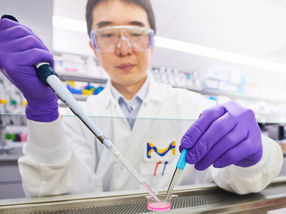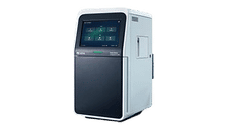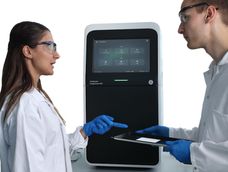Live cell imaging revolutionises disease diagnostics and drug discovery
Stakeholder collaboration will be crucial to convert these developments into clinically meaningful tests
Advertisement
Tremendous advances in electronics, optics, fluorescent tools, and molecular biology have made live cell imaging technologies more accessible to life scientists looking to understand biological dynamics and visualize cellular events in organisms. The foray of omics technologies and nanotechnologies into mainstream medicine has already enabled commercial lab-on-a-chip microfluidics systems that analyse cells, DNA, RNA and proteins. As live cell imaging evolves, it will become an integral part of disease diagnostics and drug discovery processes.
New analysis from Frost & Sullivan, The Untapped Potential in Live Cell Imaging, finds that live cell imaging technologies will have a large number of niche applications in cell biology, cancer research, developmental biology and neuroscience. Currently available technologies include live cell based tests systems and molecular models such as high resolution imaging systems.
“The principal challenges to successful live cell imaging are microscopic settings optimization, fluorescent components selection, and culture environment maintenance,” said Technical Insights Senior Research Analyst Cecilia Van Cauwenberghe. “Parallel advances in the field of cell culturing will also be critical to ensure accurate, real-time results.”
Employing live cell imaging along with fixed cell tests before the former completely replaces the latter will lower costs and shorten throughput times. Equipment combining microscopes with cell culture incubators is already on offer, facilitating affordable 3D, real-time evaluation, multiplexing and automation capabilities.
Tightly integrated systems can provide new standards of precision and levels of efficiency for the study of individual and small groups of live cells. They will enable novel approaches for multiple cell analysis, simultaneous processing, and multi-day time lapse live cell imaging.
However, it is vital that government patent systems protect these innovations, especially since new players in the market emerge from different start points. Similarly, measures must be taken to reduce uncertainty regarding reimbursements, and to establish frameworks guaranteeing equilibrium among tier I companies, small and medium enterprises, and start-ups designing novel technologies.
“Intellectual property regimes promoting integration between academia and industry in order to deliver new solutions are necessary,” concluded Cauwenberghe. “Drug producers must collaborate with other stakeholders to translate live cell imaging innovations into clinically meaningful tests that can be used for diagnosis, prognosis and drug development.”
Other news from the department business & finance
These products might interest you
Most read news
More news from our other portals
See the theme worlds for related content
Topic World Cell Analysis
Cell analyse advanced method allows us to explore and understand cells in their many facets. From single cell analysis to flow cytometry and imaging technology, cell analysis provides us with valuable insights into the structure, function and interaction of cells. Whether in medicine, biological research or pharmacology, cell analysis is revolutionizing our understanding of disease, development and treatment options.

Topic World Cell Analysis
Cell analyse advanced method allows us to explore and understand cells in their many facets. From single cell analysis to flow cytometry and imaging technology, cell analysis provides us with valuable insights into the structure, function and interaction of cells. Whether in medicine, biological research or pharmacology, cell analysis is revolutionizing our understanding of disease, development and treatment options.






















































